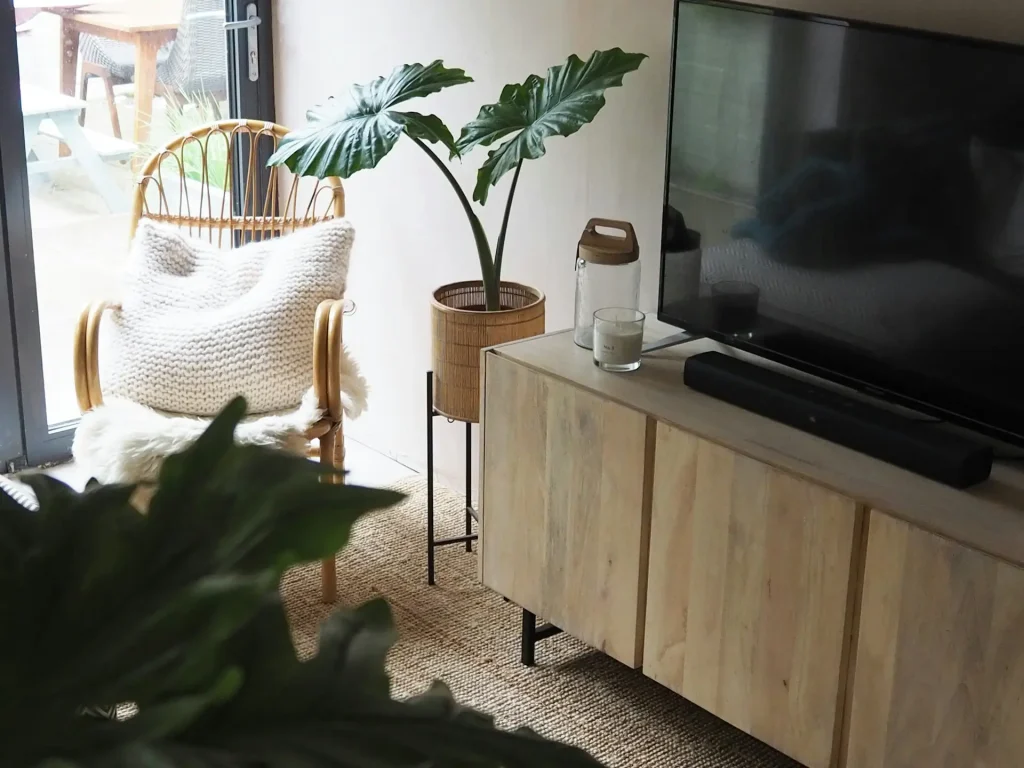Buy Furniture, Mango Furniture
Embracing Sustainability and Style: The Rise of Mango Wood Furniture in Modern Home Decor
Responsible consumerism is a process of refinement. It is about finding ways to do things more efficiently, minimising the damaging impact of our industries and reducing their waste.
All industrial processes create by-products; the current push to find usable materials that would otherwise go to landfill makes just as much sense for the profitability of the associated industries as it does for the planet.
In furniture design, there’s no shortage of this kind of ingenuity. More and more people are decorating their homes with items made from these reclaimed resources – and in a lot of cases, they are as aesthetically-pleasing and unique as they are sustainable.
One of the rising stars of this economy of recovery is mango wood furniture. With its varied pigment and intricate, patterned grain, you not only get a piece that looks bespoke and elegant, you also have the benefit of knowing that you’re doing your bit for the climate. Combine that with the performance-related advantages of mango wood timber and what you get is a real competitor for any modern interior design scheme.
Let’s take a closer look at what makes mango wood furniture such a great choice for these times…
From Fruit to Furniture: The Story of Mango Wood
Like a plum or a cherry, the mango fruit is a drupe, so called for its botanical makeup: it has a central stone, encased by soft flesh and outer skin.
As with all living things, mango trees have a period of time in which they are most fertile and begin to lose some of their productivity after 15-20 years. For this reason, commercial growers tend to have a crop cycle of an equivalent time-span, leaving a lot of wood left over from trees being cut down to make way for the next generation.
This vast and fast turnover of timber would be happening anyway, so every piece of mango wood furniture is innately ethical and sustainable – and as we will see, these eco-friendly attributes only look better alongside its aesthetic and functional properties.
Mango Wood Furniture: Material Characteristics
Similar to other woods favoured by artisans – like Sheesham, for example – mango wood is famed for its distinctive appearance. Once you’ve seen it, it’s hard to mistake it for anything else. You’ll know if a piece of furniture is made from the wood of a mango tree by looking out for the following characteristics:
Natural Range of Colour
The natural base tone for mango wood is somewhere between a light golden brown and caramel, but it is common for the flesh of the wood to vary in its colour significantly, regularly within the same length of timber. You will often find pieces with streaks of contrasting colour running through the wood: yellows, blacks and even pinks are common.
Spalting
While it may not sound ideal to buy a material that has been infected by a fungus, in the case of mango wood furniture, this is exactly what artisanal tastes prize most. The presence of fungi in the tree’s life cycle causes the wood to become stunningly discoloured by a process known as spalting.
Spalted mango wood furniture takes a material that’s already aesthetically appealing and interesting in its own right and turns it into something truly beautiful and entirely one-of-a-kind.
Grain Texture
One of the most satisfying aspects of using wood for furniture is the fact that each length of timber is slightly different. This is true of all woods, but the mango tree takes this truth to new extremes.
The pattern in the grain of a piece of mango is something to behold. While the sheer variety makes it impossible to generalise about, one feature of its grain is guaranteed: it will be a thing of beauty.
Why Go Mango? Material Advantages
Many questions about a material’s usefulness in the furniture trade can be boiled down to one simple conflict: fashion vs. function. Mango wood furniture offers a fairly simple solution to this issue – why not have both?
Here’s just a few of the reasons why this wood is chosen by so many…
- Strength: Mango wood is considered a hardwood; its strength is less than but comparable to oak. Furniture made from mango wood will be sturdy and won’t easily fall victim to wear and tear.
- Versatility: Despite its strength, mango timber is still easy to work with. Mango wood furniture can therefore be made into all sorts of things, from simplistic, minimalist designs to the most ornate and intricate of pieces.
- Ethics: So much weight has been placed on our use of the Earth’s raw materials that any resource which doesn’t weigh on the conscience is a relief. Not only is mango wood furniture a great use of an abundant material, it also happens to reduce agricultural waste.
- Maintenance: Like many of the best things in life, mango wood furniture only improves with age. When properly cared for, these pieces will be prized heirlooms for years to come.
- Cost: Last but by no means least – mango wood is surprisingly affordable for a premium and highly sought after product. The trees reach their usable maturity quickly, so that by the time they have outgrown their most productive fruit-bearing years they are in their prime as a durable resource. Very little processing is required once the tree has been felled, further decreasing the financial outlay.
Mango Wood Furniture – The Mindful Material
The wood of a mango tree really is very beautiful; the fact that it could almost get overlooked as a material because we grow it for its fruit is incredible. Given that all of the above is true, in these times of ethical use of resources, it would be fairly high up on the list of useful, sustainable and aesthetically pleasing timbers, even without the edible part.
Mango wood furniture is more than just a fashion statement or an eco-friendly alternative; it is both of those things – and a lot more besides. It’s one of those rare instances where every piece of furniture comes with peace of mind.

